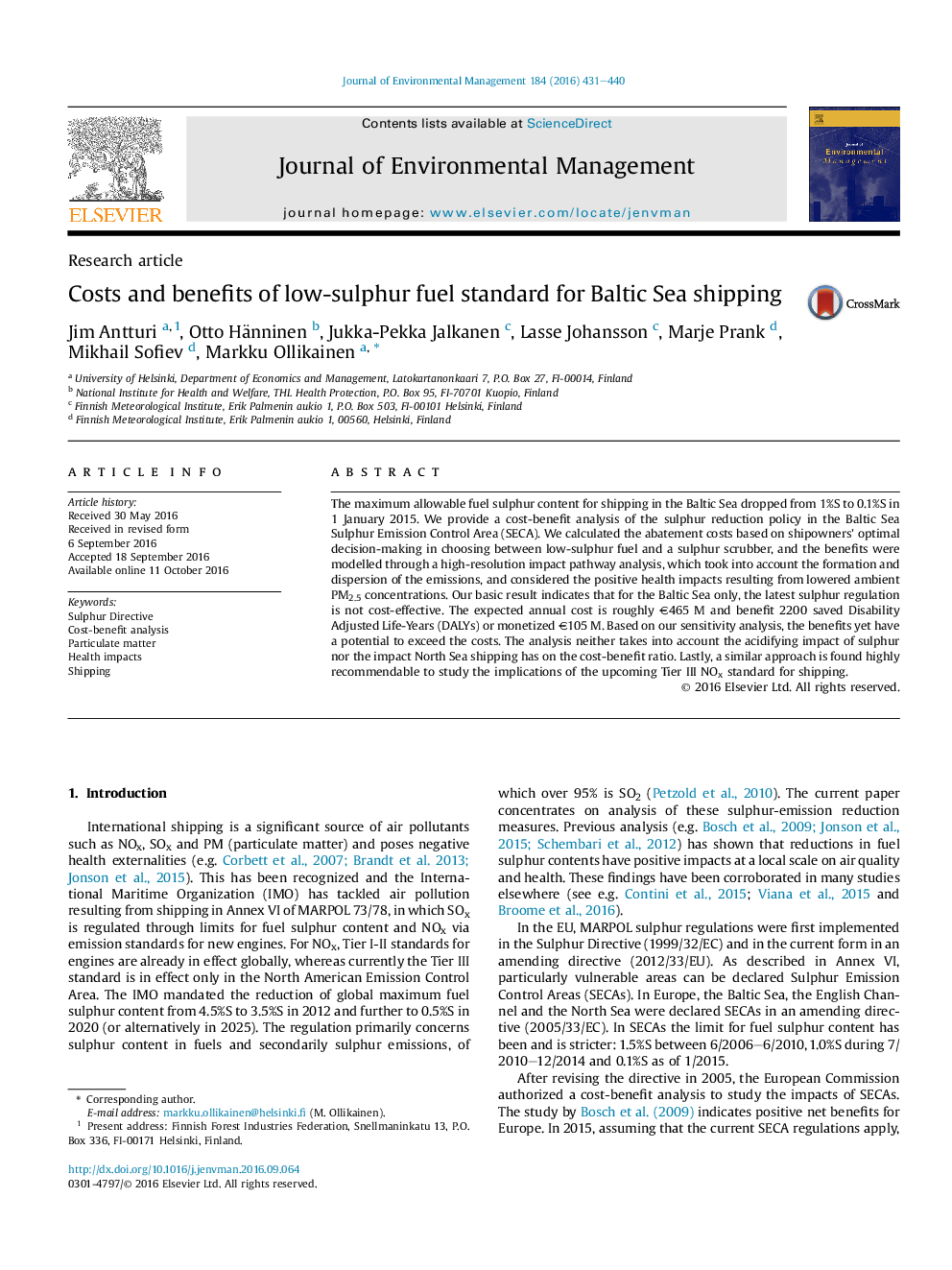| Article ID | Journal | Published Year | Pages | File Type |
|---|---|---|---|---|
| 5117108 | Journal of Environmental Management | 2016 | 10 Pages |
Abstract
The maximum allowable fuel sulphur content for shipping in the Baltic Sea dropped from 1%S to 0.1%S in 1 January 2015. We provide a cost-benefit analysis of the sulphur reduction policy in the Baltic Sea Sulphur Emission Control Area (SECA). We calculated the abatement costs based on shipowners' optimal decision-making in choosing between low-sulphur fuel and a sulphur scrubber, and the benefits were modelled through a high-resolution impact pathway analysis, which took into account the formation and dispersion of the emissions, and considered the positive health impacts resulting from lowered ambient PM2.5 concentrations. Our basic result indicates that for the Baltic Sea only, the latest sulphur regulation is not cost-effective. The expected annual cost is roughly â¬465 M and benefit 2200 saved Disability Adjusted Life-Years (DALYs) or monetized â¬105 M. Based on our sensitivity analysis, the benefits yet have a potential to exceed the costs. The analysis neither takes into account the acidifying impact of sulphur nor the impact North Sea shipping has on the cost-benefit ratio. Lastly, a similar approach is found highly recommendable to study the implications of the upcoming Tier III NOx standard for shipping.
Related Topics
Physical Sciences and Engineering
Energy
Renewable Energy, Sustainability and the Environment
Authors
Jim Antturi, Otto Hänninen, Jukka-Pekka Jalkanen, Lasse Johansson, Marje Prank, Mikhail Sofiev, Markku Ollikainen,
